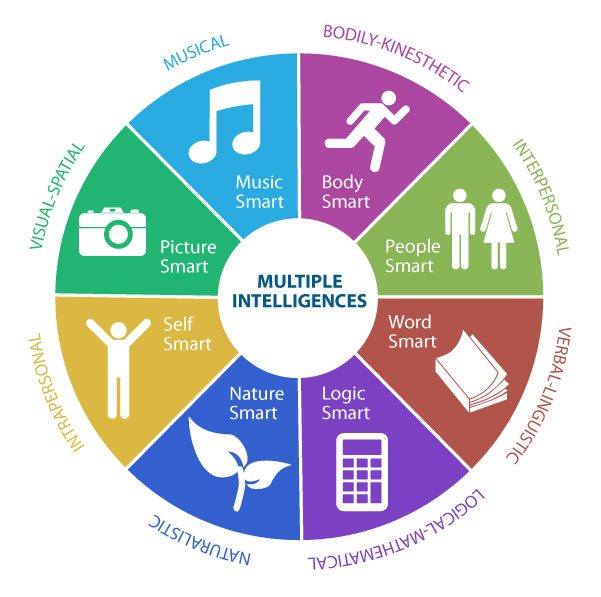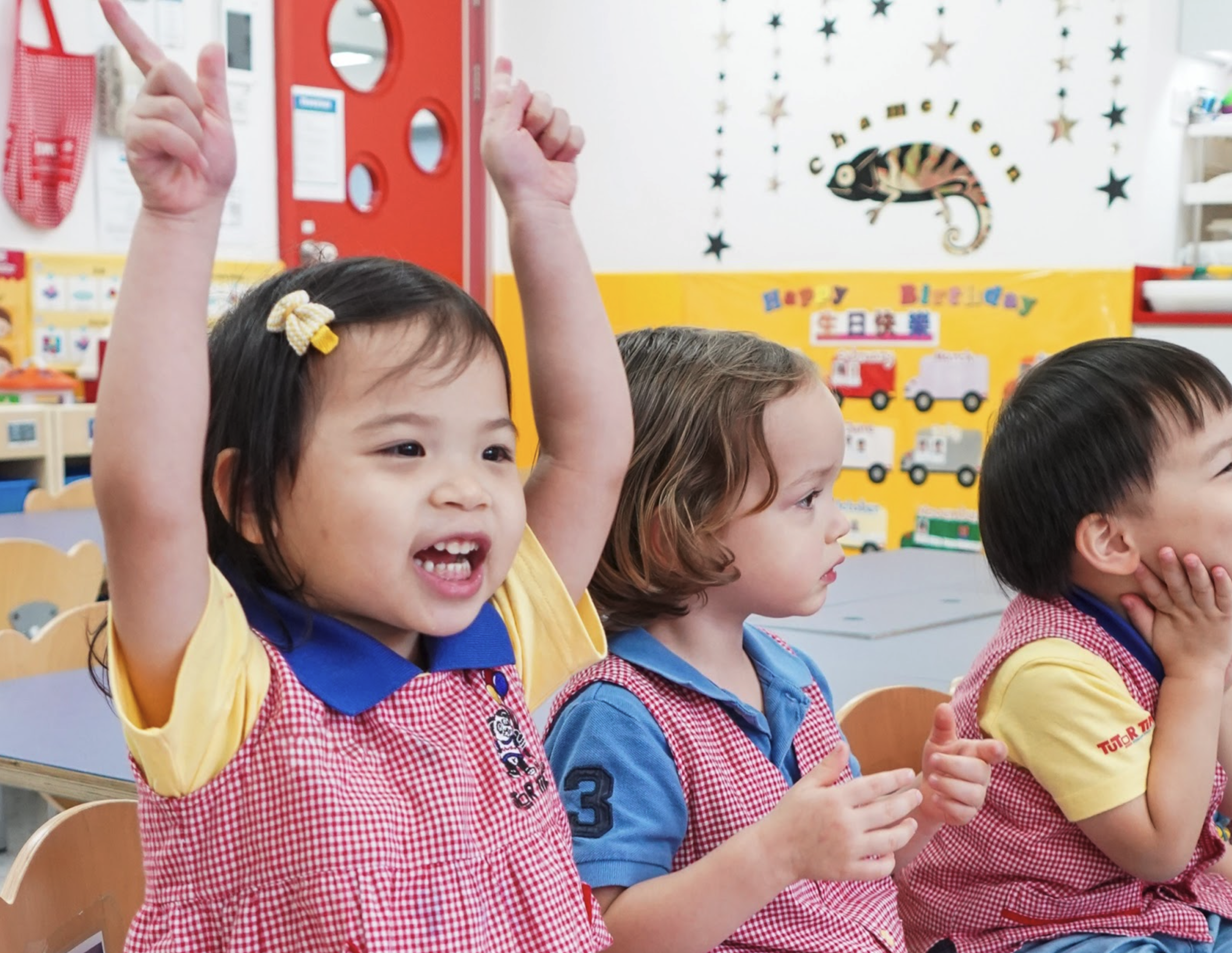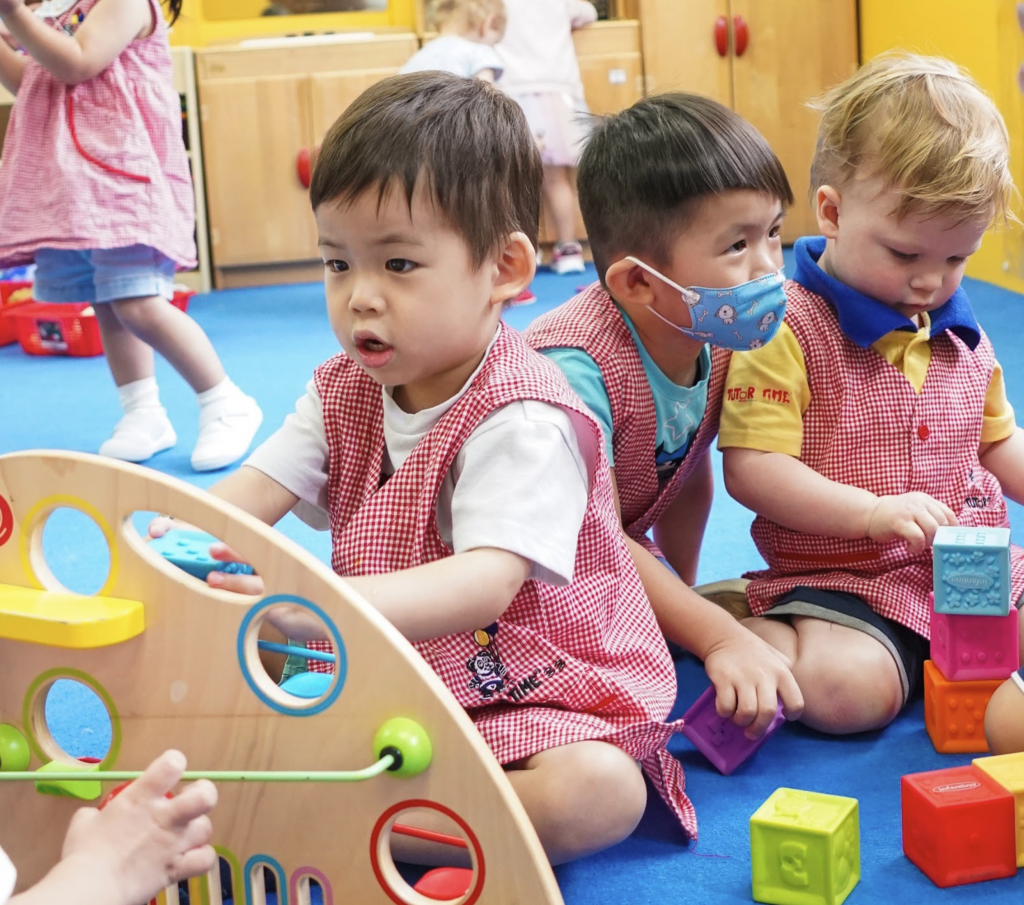Throughout history, intelligence has been defined in many different ways. Today, the predominant definition revolves around measuring IQ, as well as using standardized tests to examine children’s linguistic, mathematical, and logical thinking abilities. At Tutor Time, we adopt a more holistic approach that is inspired by the likes of Maria Montessori, Rudolf Steiner, and Howard Gardner. In particular, Gardner’s Theory of Multiple Intelligences takes a more holistic approach by viewing intelligence not as a single fixed entity, but rather a collection of different types of intelligences. This article will take a closer look into what this theory is, the 8 different intelligences, and how Tutor Time seamlessly integrates it into their curriculum.
What is the Theory of Multiple Intelligences?
Developed in the early 1980s, Gardner’s theory emerged from research on exceptional individuals and cross-cultural studies. His work challenged the traditional view of intelligence and suggested that there are at least eight different intelligences, including linguistic, logical-mathematical, musical, spatial, bodily-kinesthetic, interpersonal, intrapersonal, and naturalistic. Gardner’s theory gained support from educators and psychologists who advocate for a more holistic and personalized approach to education that values and nurtures the diverse strengths of individuals. In particular, his theory contradicted the popular view that intelligence was a unitary concept measured solely by IQ tests.
Read more: What is Piaget’s Theory of Cognitive Development?
Why is Gardner’s Theory of Multiple Intelligences important?
The Multiple Intelligences Theory has impacted education in many ways, emphasizing the importance of a well-rounded and holistic approach to learning. By embracing this theory, educators can design diverse and inclusive lesson plans that cater to the different intelligences, fostering a more personalized approach to learning. Teachers can better recognize each child’s strengths and weaknesses, allowing them to be more intentional in their lesson planning. Children benefit from these tailored learning experiences, which help them develop into well-rounded individuals. Not only does this make learning more holistic, it also helps to boost children’s confidence, increase their motivation, and improve overall academic performance.
8 Types of Intelligences according to Gardner

Image Credit: Sajaganesandip, Multiple-intelligence, CC BY-SA 4.0
Gardner identified eight intelligences that each person possesses to varying degrees.
Linguistic Intelligence
Linguistic intelligence refers to the ability to use language effectively. Individuals with high linguistic intelligence excel in verbal and written communication, including reading, writing, speaking, and understanding language nuances. They have a strong command of vocabulary, grammar, and syntax, and can express their thoughts and ideas eloquently. They enjoy engaging in discussions, debates, and storytelling. Linguistically intelligent individuals are often skilled writers, poets, journalists, or public speakers. They may have a talent for learning and mastering different languages, and can effectively convey complex ideas through words.
Logical-Mathematical Intelligence
Logical-mathematical intelligence pertains to logical reasoning, critical thinking, and mathematical abilities. Individuals with high logical-mathematical intelligence exhibit strong problem-solving skills, logical analysis, and numerical aptitude. They excel in activities that require reasoning, making connections, identifying patterns, and solving complex problems. Mathematically inclined individuals can easily understand and manipulate numbers, equations, and mathematical concepts. They enjoy exploring abstract ideas, conducting experiments, and engaging in activities that involve logical reasoning and critical analysis.
Musical Intelligence
Musical intelligence involves sensitivity to rhythm, melody, and musical patterns. Individuals with high musical intelligence have a deep appreciation for music, can recognize and reproduce musical tones, and may excel in playing musical instruments, composing music, or singing. They possess a keen sense of pitch, rhythm, and harmony. Musically intelligent individuals have a strong ability to recognize patterns and structures in music, and they may easily understand different musical genres and styles. They can express emotions and convey messages through music. They often have a heightened auditory perception and are sensitive to the nuances of sound.
Spatial Intelligence
Spatial intelligence refers to the ability to perceive and understand visual information accurately. Individuals with strong spatial intelligence have a keen sense of space, can mentally manipulate and visualize objects and spaces, and may excel in fields such as architecture, design, or visual arts. They have a natural talent for visualizing concepts, creating mental images, and recognizing patterns and relationships among visual elements. They can easily navigate through physical spaces and have a good sense of direction. Spatially intelligent individuals can accurately interpret maps, diagrams, and graphs, and they often exhibit creativity in their visual expressions.
Bodily-Kinesthetic Intelligence
Bodily-kinesthetic intelligence relates to physical coordination, control, and body awareness. Individuals with high bodily-kinesthetic intelligence have excellent motor skills and dexterity. They excel in activities such as sports, dance, acting, or other physical performances. They have a strong sense of body control, balance, and hand-eye coordination. Bodily-kinesthetically intelligent individuals can easily learn and master new physical skills, adapt to different physical environments, and exhibit grace and agility in their movements. They may have a heightened awareness of their body and are often engaged in physical expressions of creativity.
Interpersonal Intelligence
Interpersonal intelligence involves the ability to understand and interact effectively with others. People with high interpersonal intelligence exhibit strong empathy, communication skills, and social awareness. They have a natural ability to understand the emotions, motivations, and intentions of others, and can establish rapport and build relationships easily. They excel in social settings, value collaboration, and are skilled in conflict resolution and negotiation. Interpersonally intelligent individuals can easily adapt their communication styles to different audiences and are often good listeners. They have a deep understanding of group dynamics and are effective team players. They may pursue careers in counseling, teaching, leadership, or other fields that require strong interpersonal skills.
Intrapersonal Intelligence
Intrapersonal intelligence pertains to self-awareness and understanding of one’s own emotions, thoughts, and motivations. Individuals with high intrapersonal intelligence possess self-reflective abilities, a strong sense of self, and an understanding of their own strengths, weaknesses, and goals. They have a deep awareness of their emotions, values, beliefs, and personal identity. Intrapersonally intelligent individuals are introspective and often engage in self-reflection to gain insights and make meaning of their experiences. They have a strong inner drive and are motivated by personal goals and aspirations. They can effectively regulate their own emotions and manage their internal states. Intrapersonal intelligence is often associated with qualities such as self-confidence, resilience, and self-motivation.
Naturalistic Intelligence
Naturalistic intelligence relates to a deep connection with and understanding of the natural world. Individuals with high naturalistic intelligence exhibit a strong appreciation for plants, animals, and the environment. They have a keen ability to observe and categorize natural phenomena, such as identifying different species, recognizing patterns in nature, or understanding ecological relationships. Naturalistically intelligent individuals are often drawn to activities such as gardening, exploring nature, or working in environmental sciences. They have a heightened sensitivity to the environment and may possess a deep concern for its preservation and sustainability. They are attentive to details in the natural world and can easily identify and recall information related to the natural environment.
How is the Multiple Intelligences Theory incorporated into Tutor Time’s curriculum?
At Tutor Time, our kindergarten program is based on LifeSmart™, which was built around Gardner’s Multiple Intelligences Theory. LifeSmart consists of 10 types of ‘smarts’ or ‘intelligences’ that we assess in each child. This includes approaches to learning, creative arts, language, literacy, logic and reasoning, math, nature and science, social studies, physical development, and social-emotional development. Our teachers use the Cycle of Intentional Planning to personalize lessons to each child’s strengths and identify areas of improvement, ensuring that each child is well-rounded when they enter primary school.
While the Theory of Multiple Intelligences serves as one of our frameworks, our curriculum does not only revolve around this approach. For example, it’s impossible to have 10 classes a day to address each intelligence. Instead, what we try to do is incorporate a variety of activities in class that foster growth in multiple domains at the same time. Also, having a low student-to-teacher ratio allows teachers to pay attention to each child and their unique abilities. Ultimately, this theory helps guide us in raising and educating well-rounded children who are smart in many ways.
Conclusion
In today’s increasingly complex world, being smart can no longer be defined according to traditional metrics. Howard Gardner’s Multiple Intelligences Theory offers a valuable perspective on human intelligence, recognizing that it extends beyond just measures of IQ. His theory suggests that humans can be intelligent in eight different ways, which opened up a whole new approach to early childhood education. However, like any theory, it needs to be taken with a grain of salt. While people can be smart in many ways, it may not only be limited to the eight ways outlined in Gardner’s theory. There may be more (or less) types of intelligences that are not accounted for. Nevertheless, Gardner’s theory influenced many educators to place more emphasis on developing the whole child instead of just focusing on literacy and mathematical skills.
Read more: Discovering the Montessori education approach: unlocking your child’s potential

